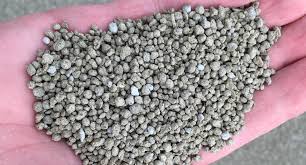
Dec . 11, 2024 10:16 Back to list
Understanding Urea Nitrogen Levels for Optimal Grass Growth and Health
Urea Nitrogen for Grass Importance and Application
Urea nitrogen is a crucial component in the growth and maintenance of grass, playing a significant role in promoting lush, green lawns and healthy turf. For both residential and commercial landscapes, understanding the role of urea nitrogen in lawn care can lead to more effective fertilization strategies, ultimately enhancing the aesthetic appeal and overall health of grass.
Understanding Urea Nitrogen
Urea nitrogen is a form of nitrogen found in fertilizers and is widely used for its high nitrogen content, making it an excellent choice for promoting vegetative growth. When applied to soil, urea undergoes a process called hydrolysis, which converts it into ammonium and subsequently to nitrate, forms that grasses can readily uptake. Nitrogen is one of the three primary nutrients required for plant growth, the other two being phosphorus and potassium.
The Role of Nitrogen in Grass Growth
Nitrogen plays several vital roles in the growth of grass. It is a key component of amino acids, which are the building blocks of proteins, and is essential for chlorophyll production, the green pigment in plants that facilitates photosynthesis. Adequate nitrogen levels promote vigorous growth and green coloration, enhancing the grass's ability to absorb sunlight and produce energy.
In the absence of sufficient nitrogen, grass tends to appear yellow or pale, a condition known as nitrogen deficiency. This deficiency results in stunted growth and increased susceptibility to pests and diseases. Therefore, maintaining optimal nitrogen levels through the application of urea nitrogen is crucial for healthy grass.
Application of Urea Nitrogen
When applying urea nitrogen to grass, timing and quantity are essential factors to consider. The best time for fertilizer application is typically during the growing season when grasses are actively taking up nutrients. For cool-season grasses, early spring and fall are ideal, while warm-season grasses benefit from fertilization in late spring and summer.
urea nitrogen for grass

The recommended application rate for urea nitrogen varies based on grass type, soil fertility, and desired lawn outcome. Generally, a rate of 1 to 2 pounds of nitrogen per 1,000 square feet every 4 to 6 weeks is suggested for most residential lawns. Over-application can lead to excessive growth and increased susceptibility to diseases and pests, as well as environmental issues such as nitrogen runoff into waterways.
Best Practices for Fertilization
To maximize the benefits of urea nitrogen and promote a healthy lawn, there are best practices that should be followed. Firstly, it is important to conduct a soil test to determine the existing nutrient levels and pH of the soil. This information can help tailor the fertilization strategy to the specific needs of the grass.
Secondly, it is wise to incorporate urea nitrogen fertilizers into the soil rather than leaving them on the surface. This practice minimizes the risk of nitrogen loss through volatilization, particularly on hot and windy days. Additionally, watering the lawn after application helps to dissolve the fertilizer and distribute it into the root zone effectively.
Environmental Considerations
While urea nitrogen is beneficial for grass growth, there are environmental considerations that must be acknowledged. Excessive nitrogen application can lead to nutrient runoff, contributing to water pollution and algal blooms in nearby water bodies. To mitigate these risks, adopting an integrated lawn care approach, including proper fertilization, irrigation, and maintenance practices, is essential.
Using slow-release nitrogen fertilizers or applying urea nitrogen in a split application can also help reduce the risk of leaching and runoff, while still providing the grass with the nutrients it needs for optimal growth.
Conclusion
In summary, urea nitrogen is an indispensable element for the healthy growth and vitality of grass. By understanding its role in plant physiology and implementing proper application techniques, lawn care enthusiasts can achieve a lush, green lawn that enhances both the beauty of their landscape and the health of their environment. Regular soil testing, appropriate application rates, and environmentally responsible practices are key to harnessing the full potential of urea nitrogen in grass care. With these strategies, anyone can enjoy the many benefits of a beautifully maintained lawn.
-
10 10 10 Fertilizer Organic—Balanced NPK for All Plants
NewsJul.30,2025
-
Premium 10 10 10 Fertilizer Organic for Balanced Plant Growth
NewsJul.29,2025
-
Premium 10 10 10 Fertilizer Organic for Balanced Plant Growth
NewsJul.29,2025
-
Premium 10 10 10 Fertilizer Organic for Balanced Plant Growth
NewsJul.29,2025
-
50 Pound Bags of 13-13-13 Fertilizer for All Plants – Bulk & Organic Options
NewsJul.28,2025
-
High-Efficiency 15-30-15 Granular Fertilizer for Healthy Crops
NewsJul.28,2025
